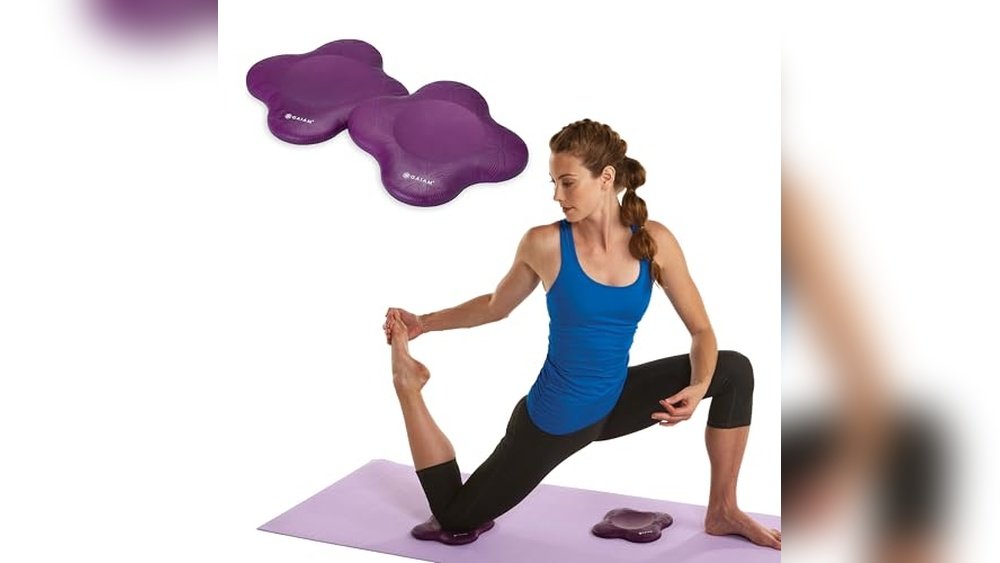Are you curious about trying aerial yoga but worried you don’t have the right equipment? What if you could start right now, using just your body and a bit of space at home?
This guide will show you how to practice aerial yoga for beginners without any special gear. You’ll discover simple moves that build strength, improve flexibility, and give you that amazing feeling of floating—all without needing a hammock or swing. Whether you want to relieve stress, tone your muscles, or try something new, this easy-to-follow introduction will help you get started confidently.
Keep reading, and unlock the secrets to aerial yoga that anyone can do!
Credit: www.lemon8-app.com
Benefits For Beginners
Aerial yoga offers many benefits for beginners. It helps build strength and flexibility safely. Even without equipment like a hammock, beginners can enjoy similar advantages. This practice supports the body and eases movement. It also helps relieve pressure on joints and the spine. Simple poses introduce beginners to aerial yoga’s unique movements.
Support And Assistance
Beginners often worry about balance and strength. Aerial yoga supports the body, making poses easier. Without equipment, you can use walls or chairs for support. This assistance helps beginners hold poses longer. It reduces fear of falling or injury. Support builds confidence and encourages practice.
Joint And Spinal Decompression
Gravity helps gently stretch the spine in aerial yoga. This decompression relieves tension in the back and joints. Beginners feel less pressure and stiffness after practice. It can improve posture and reduce back pain. Even simple stretches without equipment can help decompress the spine.
Flexibility And Strength Gains
Aerial yoga encourages deeper stretches safely. Beginners increase flexibility over time with regular practice. It also builds muscle strength, especially in the core and arms. Using body weight as resistance tones muscles naturally. Strength and flexibility improve balance and body control.
Beginner-friendly Poses
Many aerial yoga poses suit beginners well. Start with gentle, easy movements that improve comfort and balance. Examples include supported forward bends and gentle backbends. These poses prepare the body for more advanced moves. Practicing beginner-friendly poses builds a solid foundation.
What To Expect
Starting aerial yoga without equipment offers a unique experience. It challenges your body and mind in new ways. Knowing what to expect helps ease any worries. It prepares you for the journey ahead. The sensations and movements might surprise you at first. Understanding these helps you stay calm and focused.
Initial Discomfort
At the start, your body may feel strange or sore. Skin might feel sensitive from new contact and stretches. Muscles may ache as they work differently than usual. This discomfort is normal and often fades quickly. Give your body time to adjust to new movements and poses.
New Sensations
Suspending your body feels different from regular yoga. You may notice a gentle floating or lightness. Balance and strength become more important in the air. Many find this feeling relaxing and freeing over time. It can help reduce stress and improve focus.
Focus On Foundations
Start with simple poses and steady breath control. Building a strong foundation reduces risk of injury. Pay attention to your body’s signals and limits. Practice basic movements slowly and with care. Consistency helps improve strength and confidence in aerial yoga.
Preparation Tips
Preparing for aerial yoga without equipment requires thoughtful steps. Proper preparation ensures safety and enhances your experience. Focus on comfort, energy, and mindset before starting your practice.
Clothing Choices
Wear tight-fitting clothes that cover your arms and legs. This protects your skin from friction and pinching. Choose breathable fabrics to stay cool and comfortable. Avoid loose or baggy clothes that can get in the way. Stretchy materials help you move freely.
Hydration And Meals
Drink water before and after your practice to stay hydrated. Avoid heavy meals at least one hour before starting. Light snacks like fruit or nuts are better if you need energy. Proper hydration and food help prevent dizziness and fatigue during poses.
Patience And Consistency
Progress in aerial yoga takes time and practice. Start slowly and listen to your body. Repeat sessions regularly to build strength and confidence. Stay patient with yourself, even if some moves feel hard at first. Consistent effort leads to better balance and flexibility.
Basic Movements Without Equipment
Aerial yoga feels unique with its hammock support. Beginners can practice basic moves even without this equipment. Using household items and safe floor techniques helps replicate some benefits. These alternatives build strength, flexibility, and confidence for aerial yoga practice.
Focus on slow, controlled movements. Keep your breathing steady. This approach prepares your body gently for aerial poses.
Simulating Hammock Support
Use a sturdy scarf or towel for gentle support. Wrap it around your waist or under your arms. This helps hold your body weight partially. Practice lifting your legs or stretching with this aid. It mimics the feeling of suspension safely. Make sure the fabric is strong and tied well.
Using Walls And Chairs
Walls provide solid backing for balance and stretches. Lean against a wall to open your chest or stretch your spine. Chairs help with seated poses and leg lifts. Use a chair to support your hips or hands. Move slowly and avoid sudden shifts. These props create stability similar to a hammock.
Safe Floor Alternatives
Try floor poses that focus on core and flexibility. Use a yoga mat or soft carpet for comfort. Practice gentle backbends, twists, and leg lifts lying down. These moves build strength without strain. Always listen to your body and stop if it hurts.
Easy Beginner Poses
Starting aerial yoga without equipment may seem challenging. Easy beginner poses help build confidence and strength. These poses use your body weight and simple movements. They prepare you for more advanced aerial yoga later. Focus on slow, gentle stretches and controlled breathing.
Supported Forward Fold
This pose stretches your hamstrings and back gently. Stand with feet hip-width apart. Hinge at your hips and reach toward your toes. Let your head hang heavy. Bend your knees slightly if needed. Hold for 20 to 30 seconds. Feel the release in your spine and legs.
Gentle Backbends
Backbends open the chest and improve posture. Lie on your back with knees bent. Place your hands under your shoulders. Press into your palms and lift your chest slowly. Keep your neck relaxed. Hold the position for 10 to 15 seconds. Lower down with control. Repeat two to three times.
Hip Opening Stretches
Open hips increase flexibility and reduce tension. Sit on the floor with legs crossed. Gently press your knees toward the ground. You can lean slightly forward to deepen the stretch. Keep your back straight and breathe deeply. Hold for 30 seconds. Repeat as comfortable.
Core Strengthening Moves
A strong core supports all aerial yoga poses. Try the basic plank position. Place your hands and feet on the floor, body in a straight line. Engage your abdominal muscles. Hold for 15 to 20 seconds. Rest and repeat two times. This builds balance and control for aerial moves.

Credit: moonshine.yoga
Safety Tips
Safety is the top priority when starting aerial yoga without equipment. Practice smart habits to avoid injuries and enjoy your sessions fully. A safe approach helps build confidence and prevents strain.
Avoiding Strain
Start slowly and avoid pushing your body too hard. Focus on gentle movements and simple poses first. Use cushions or soft mats to support your joints. Rest if you feel any sharp pain or discomfort. Gradually increase intensity as your strength improves.
Listening To Your Body
Pay attention to how your body feels during practice. Stop immediately if you experience dizziness or sharp pain. Notice areas of tension and ease off if needed. Breath deeply and stay relaxed to help your muscles adjust. Trust your limits and respect your body’s signals.
Setting Up A Safe Practice Space
Choose a clear, open area free of sharp objects or hard furniture. Use a thick yoga mat or soft carpet to cushion falls. Ensure good lighting and proper ventilation. Keep water nearby to stay hydrated. Remove distractions to focus fully on your practice.
Building Strength And Flexibility
Building strength and flexibility is key to enjoying aerial yoga without equipment. This practice uses your body weight to improve muscle tone and joint mobility. Strong muscles support better balance and control. Flexible joints allow for smoother, safer movements. Both strength and flexibility grow with regular practice and mindful effort.
Start slow and focus on small improvements. Use simple poses that challenge your limits gently. Over time, your body will adapt and become more capable. This foundation makes aerial yoga more accessible and enjoyable.
Consistent Practice
Practice regularly to build strength and flexibility steadily. Short daily sessions work better than occasional long ones. Focus on key poses that engage your core and limbs. Repetition helps muscles remember movements and get stronger. Consistency also improves joint range and reduces injury risk.
Incorporating Breathwork
Breathwork supports muscle control and relaxation during practice. Deep, slow breaths increase oxygen flow to muscles. This reduces tension and helps with stretching. Coordinating breath with movement enhances focus and balance. Breath control also aids recovery and prevents fatigue.
Tracking Progress
Keep a simple journal of your practice sessions. Note which poses feel easier or harder each time. Record how long you hold each pose and your comfort level. Tracking helps identify areas needing more work or rest. Celebrate small gains to stay motivated and focused.

Credit: www.temu.com
Frequently Asked Questions
Can A Beginner Do Aerial Yoga?
Yes, beginners can do aerial yoga safely. The hammock supports the body, easing poses and building strength gently. Start with beginner classes focusing on foundational moves and practice regularly for best results.
How To Start Aerial Yoga At Home?
Start aerial yoga at home by installing a sturdy hammock securely. Wear comfortable, tight-fitting clothes. Begin with beginner-friendly poses and follow online tutorials. Practice basic safety and alignment. Stay consistent to build strength and flexibility gradually.
What Is The Difference Between Flying Yoga And Aerial Yoga?
Flying yoga and aerial yoga both use hammocks, but flying yoga emphasizes dynamic, acrobatic moves while aerial yoga focuses on gentle stretches and poses. Flying yoga is more intense and challenging, whereas aerial yoga suits beginners seeking support and spinal decompression.
Who Is Not Suitable For Aerial Yoga?
People with recent surgeries, severe osteoporosis, glaucoma, high blood pressure, pregnancy, or vertigo should avoid aerial yoga for safety reasons.
Conclusion
Aerial yoga without equipment can be safe and fun for beginners. Start slow and focus on your body’s limits. Practice basic poses regularly to build strength and confidence. Keep your movements gentle and controlled to avoid injury. Enjoy the feeling of lightness and relaxation as you learn.
With patience, aerial yoga will improve your flexibility and balance over time. Stay consistent, listen to your body, and enjoy this unique way to practice yoga.



